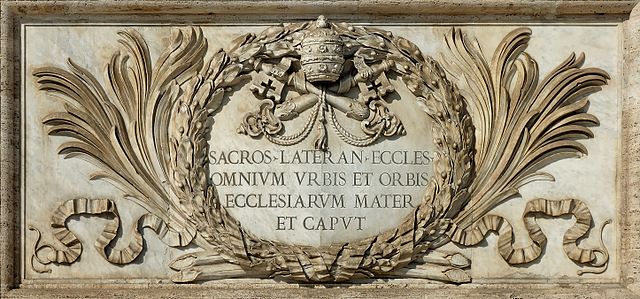Pope Gelasius I was the bishop of Rome from 1 March 492 to his death on 19 November 496. Gelasius was a prolific author whose style placed him on the cusp between Late Antiquity and the Early Middle Ages. Some scholars have argued that his predecessor Felix III may have employed him to draft papal documents, although this is not certain.
Image of c. AD 870 featuring the coronation of Charles the Bald, flanked by Gelasius I and Gregory the Great. Gelasius' writings gave him a high status with posterity.
Statue of Gelasius I, Schloss Stainz
Papal supremacy is the doctrine of the Catholic Church that the Pope, by reason of his office as Vicar of Christ, the visible source and foundation of the unity both of the bishops and of the whole company of the faithful, and as pastor of the entire Catholic Church, has full, supreme, and universal power over the whole church, a power which he can always exercise unhindered: that, in brief, "the Pope enjoys, by divine institution, supreme, full, immediate, and universal power in the care of souls."
Pius IX opening the First Vatican Council. It is during this council that papal supremacy was proclaimed a dogma.
Inscription at front of Archbasilica of Saint John Lateran, cathedral church of the Bishop of Rome: Sacros(ancta) Lateran(ensis) eccles(ia) omnium urbis et orbis ecclesiarum mater et caput meaning "Most Holy Lateran Church, of all the churches in the city and the world, the Mother and Head"




